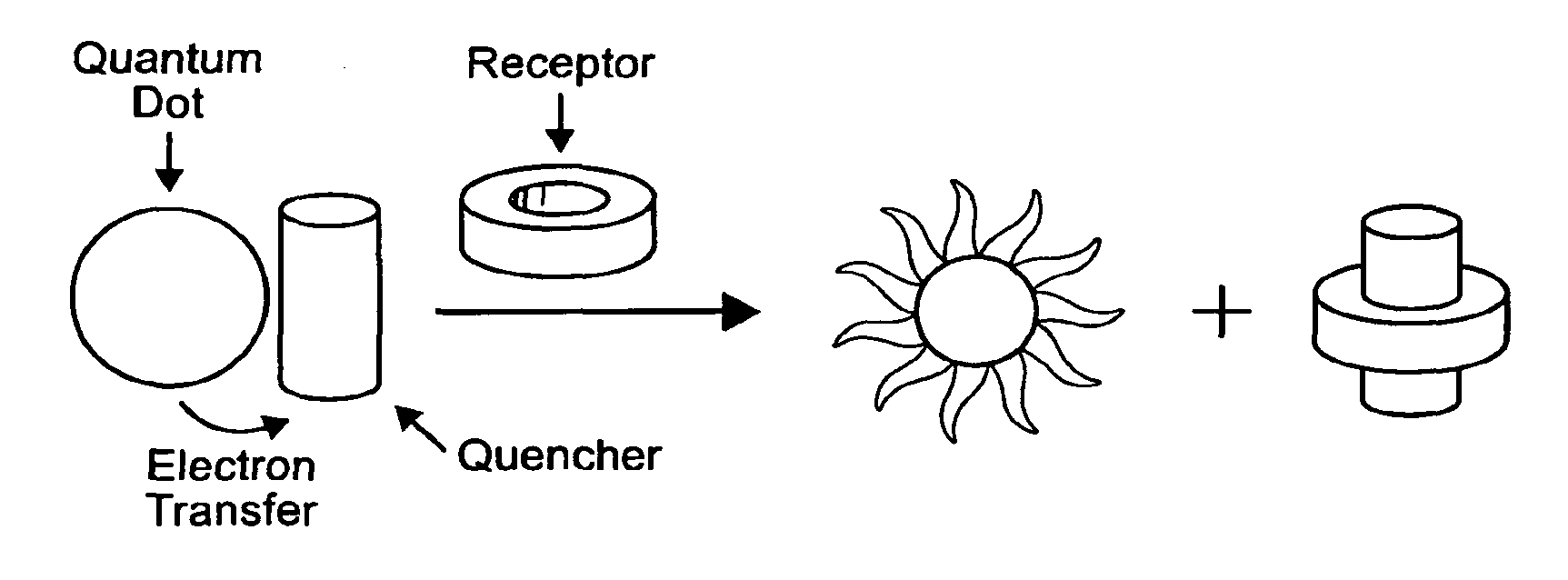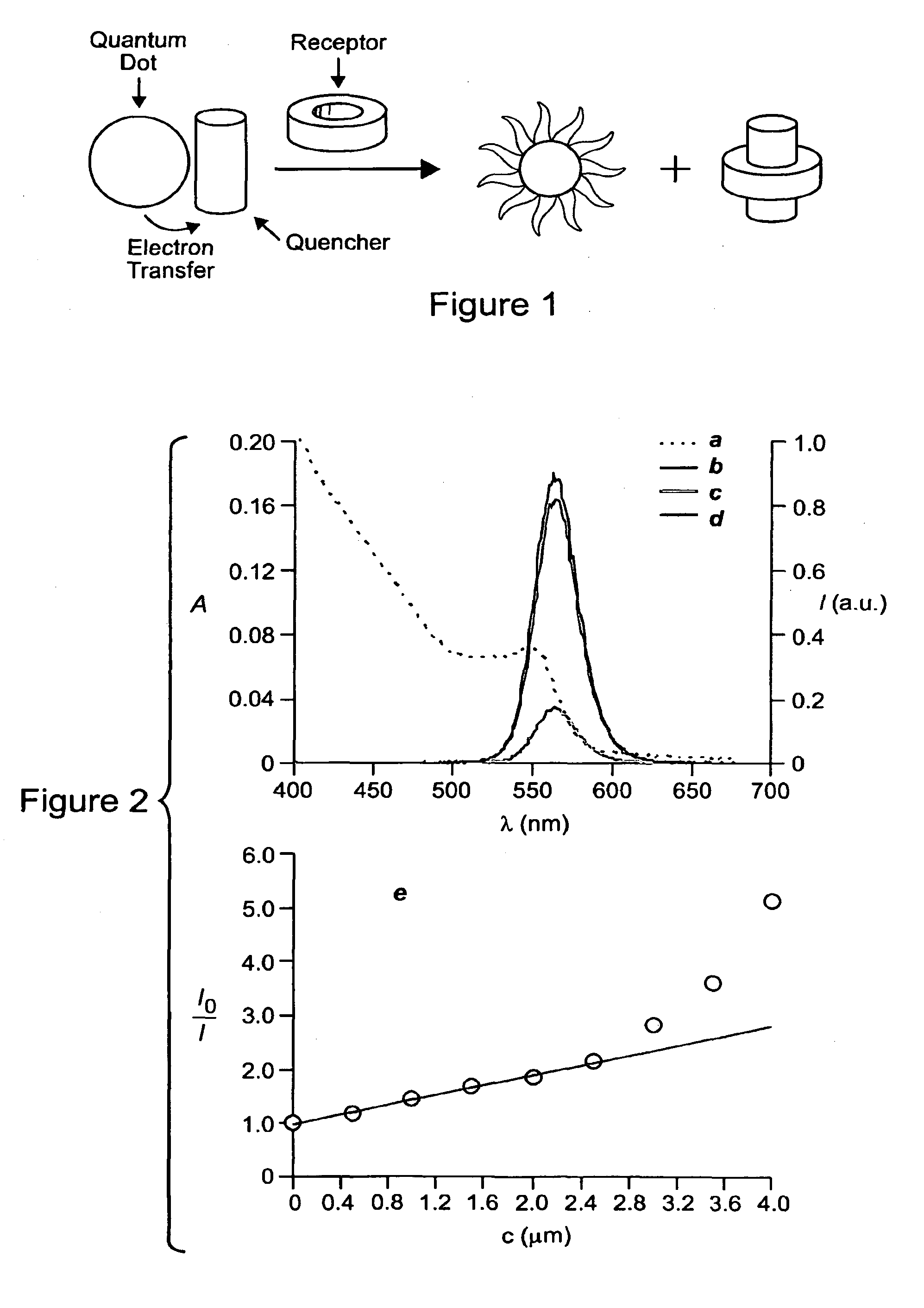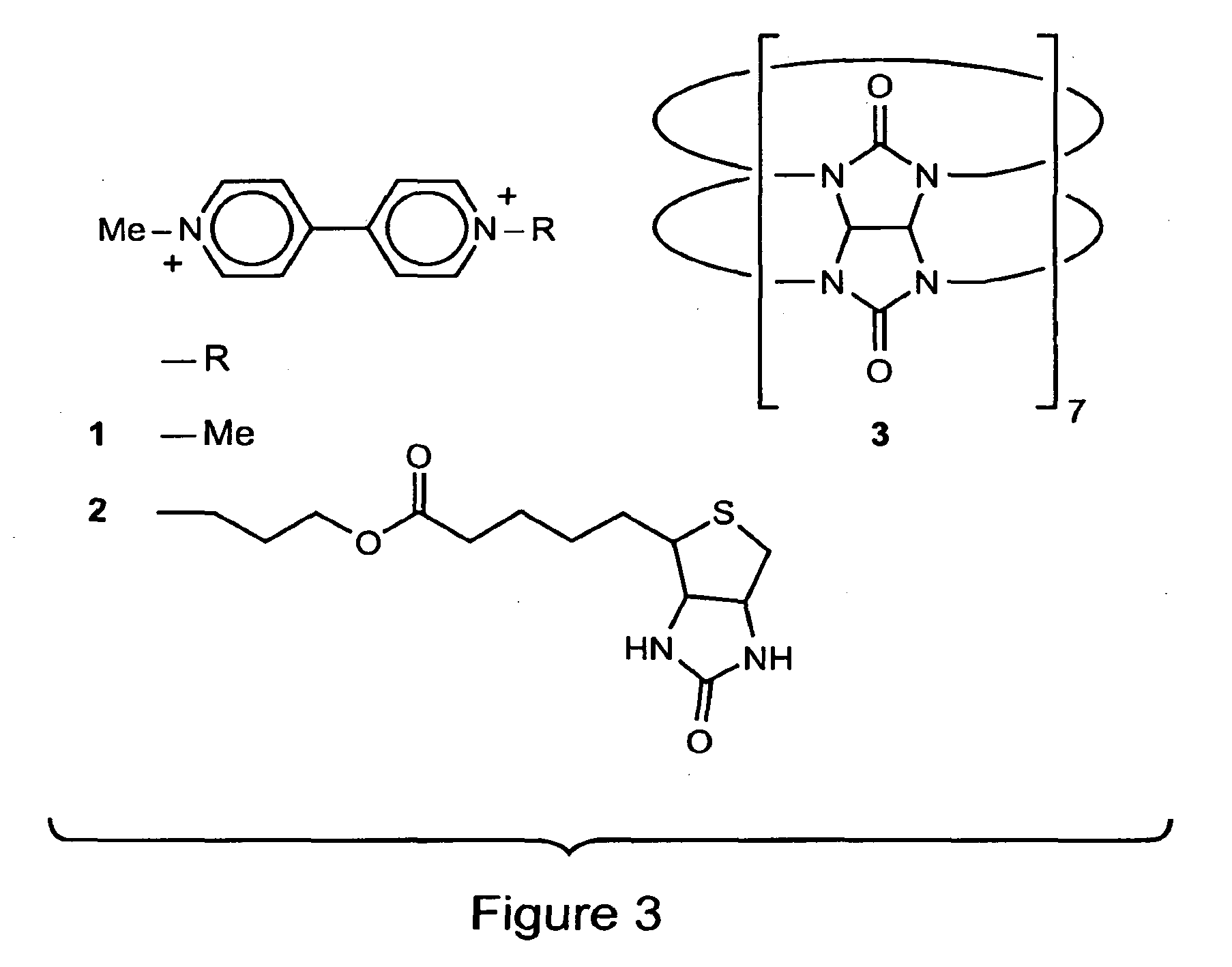Mechanism to signal receptor-ligand interactions with luminescent quantum dots
a technology of signal receptor and ligand, applied in the field of signal receptor-ligand interaction with luminescent quantum dots, can solve the problems of not offering the unique collection of attractive photophysical properties of organic dyes, and it is not clear if and how these strategies could be successfully extended to quantum dots
- Summary
- Abstract
- Description
- Claims
- Application Information
AI Technical Summary
Benefits of technology
Problems solved by technology
Method used
Image
Examples
Embodiment Construction
[0023]A composition is provided for use in a binding assay, which is comprised of at least one luminescent nanoparticle and one or more quencher molecules noncovalently associated (e.g., interactions that are electrostatic, hydrogen bonding, hydrophobic, or any combination thereof) on the surface of the nanoparticle, wherein the photoinduced transfer of electrons from an excited nanoparticle to adsorbed quencher molecule(s) (or vice versa) results in suppression (or enhancement) of luminescence. Electron transfer may occur from excited nanoparticle to quencher molecule, or from excited quencher molecule to nanoparticle. At least some quencher molecule(s) is stably (e.g., covalently or noncovalently) attached to ligand. The composition further comprises one or more receptors which specifically bind to ligand(s) stably attached to quencher molecule(s) (i.e., the molecule has a moiety which quenches luminescence and a ligand moiety which binds receptor). Receptor-ligand binding removes...
PUM
| Property | Measurement | Unit |
|---|---|---|
| mean diameter | aaaaa | aaaaa |
| wavelengths | aaaaa | aaaaa |
| wavelengths | aaaaa | aaaaa |
Abstract
Description
Claims
Application Information
 Login to View More
Login to View More - R&D
- Intellectual Property
- Life Sciences
- Materials
- Tech Scout
- Unparalleled Data Quality
- Higher Quality Content
- 60% Fewer Hallucinations
Browse by: Latest US Patents, China's latest patents, Technical Efficacy Thesaurus, Application Domain, Technology Topic, Popular Technical Reports.
© 2025 PatSnap. All rights reserved.Legal|Privacy policy|Modern Slavery Act Transparency Statement|Sitemap|About US| Contact US: help@patsnap.com



